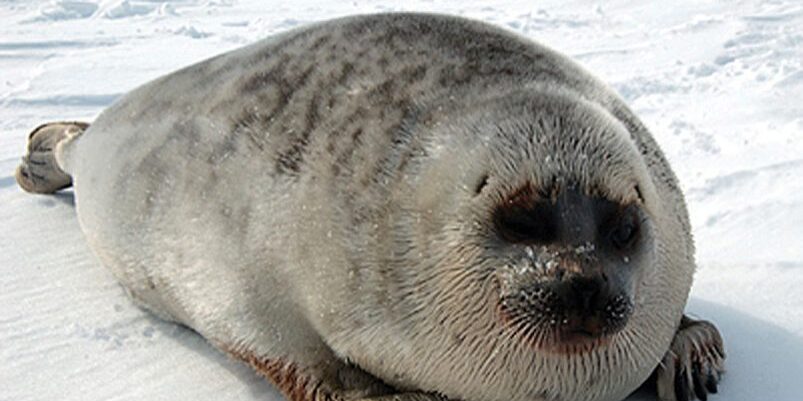After a failed attempt in 2020, NOAA Fisheries is surveying ice-associated seals in the Bering Sea. Their research will concentrate on waters between the Norton Sound and St. Matthew Island depending on sea ice conditions.
NOAA Fisheries Polar Ecosystems Program leader Michael Cameron coordinates this month’s ice seal survey.
“Early on in our program’s history, every year from 2005 to 2010, we would be going to the sea ice edge in the summer to be able to tag and sample seals,” Cameron explained. “Starting in 2014, we moved into springtime surveys to pay more attention to mothers and their pups on the (ice) floes.”
Onboard the Oscar Dyson, NOAA Fisheries has been conducting spring surveys of ice seals every two years since 2014, but they had to cancel their 2020 project due to COVID-19. The research team will study all four species this time around, but Cameron says they plan to focus mostly on ribbon and spotted seals.
“We want ultimately to understand how many seals there are in the population, what their seasonal movements are, if they’re healthy and most importantly, a lot of what I’ll be talking about today is how they are responding to changes in their habitat,” Cameron said.

A reduction in sea ice coverage over the last several years has seemed to correspond to drops in ice seals’ health. From 2018 to 2019 when sea ice was dramatically reduced in the Bering Sea, NOAA declared an unusual mortality event (U-M-E) that documented five to seven times more dead seals than the average number from years prior to that.
There is a trend between loss of sea ice and poor body weight or health of seals, but researchers don’t know why without more studies, according to Cameron.
“So just looking specifically at the relationship between mass and length, we noticed that body condition declined from 2007 to 2018,” Cameron said. “We also noticed that body condition of pups in all of the species declined. Perhaps this is because of poor nutrition for the mothers during gestation or nursing or both. The body condition of subadults and adults declined in ribbon seals but not in spotted seals.”
A possible explanation for this is that ribbon seals are traveling further from the ice shelf or diving deeper for food compared to spotted seals which requires them to expend more energy, Cameron said.
This year’s survey comes at a time when NOAA recently designated a critical habitat for Arctic ringed seals and bearded seals in an area that includes portions of the Bering, Chukchi and Beaufort seas. Both Arctic ringed and bearded seals are considered threatened under the Endangered Species Act, hence the critical habitat designation.
“Designating critical habitat does not create a preserve or refuge, and would not affect subsistence harvest of ringed or bearded seals by Alaska Natives,” according to NOAA Fisheries.
Kawerak Inc. submitted a public comment to NOAA Fisheries last year on this final designation supporting the critical habitat area. However, in its letter, Kawerak also expressed concerns over a lack of proposed actions to protect ugruk or mukluk, which are bearded seals, from vessel traffic within the area.
This new critical habitat designation overlaps with the area where Cameron and his research team will be surveying seals in April. Although they don’t know exactly where they will be operating each day, Cameron will send out daily communications to local coastal communities in Western Alaska.
“Right now the sea ice is making it look like it’s going to be, more likely, close to St. Matthew Island and not like the way the ice was in 2018,” Cameron said in late March. “If we ever see whales or walrus, we’ll avoid them and move to different locations. If we ever see hunters, we’ll avoid them and move to other locations.”
NOAA Fisheries’ plan this month is to stay 30 nautical miles or more away from whaling communities and or sealing communities. Cameron says they will not capture seals within 12 nautical miles off of the coast.
NOAA Fisheries’ spring survey of ice seals in the Bering Sea is expected to wrap up by April 25.
To share concerns, questions, ideas or to subscribe to daily update emails, contact Michael Cameron at Michael.cameron@Noaa.gov.
Photo at top: An Arctic ringed seal. Photo courtesy of National Oceanic and Atmospheric Administration.




